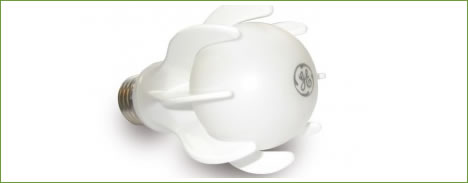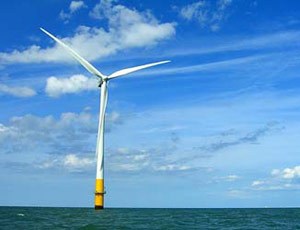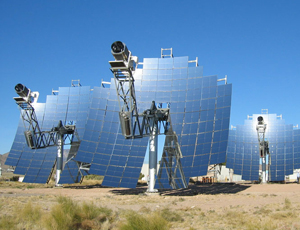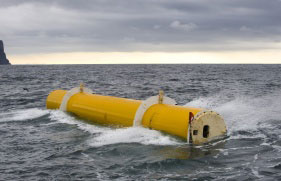Every time there's an energy-related disaster, it boosts the prospects for clean alternatives. Last month's devastating explosion at the Upper Big Branch coal mine killed 29, and got people wondering if all that ancient coal shouldn't just be left in the ground. And the spreading oil slick from the Deep Horizon rig in the Gulf of Mexico led to a flurry of Congressional bills banning offshore drilling, and rising public sentiment for cleaner alternatives.
The problem is that people's memories are short. Old arguments, such as coal is "native energy" or offshore oil offsets foreign imports, reassert themselves to reinforce the status quo. Interior Secretary Ken Salazar's approval of the Cape Wind Project in Massachusetts April 28 could spur development of the dozen other offshore projects pending in the U.S. (and, indeed, also jumpstart other stalled energy projects).
Since it was first proposed in 2001, Cape Wind has been fighting determined opposition from Cape locals who don't want to look at spinning white turbines. The tremendous cost of fighting those well-funded special interests has given both developers and potential funders pause. But if Cape Wind now goes forward (the Alliance to Protect Nantucket Sound and its allies are filing lawsuits) it could be a green light for green energy.
Here's a progress report on four green energy technologies:
Fresh Wind
Google Maps maintains an
interactive map of the status of some of America's pending offshore wind projects. The developing trend is for turbine farms to be located much further out to sea than Cape Wind (which is five miles offshore). There are projects moving forward off the coasts of Rhode Island (Deepwater Wind, 100 turbines, 400 megawatts), New Jersey (Deepwater Wind/PSEG, 96 turbines, 345 megawatts), Delaware (Bluewater Wind, 60 turbines, 450 megawatts) and New York (Con Ed/Long Island Power Authority, size to be determined), among others, and according to the American Wind Energy Association they total a whopping 2,500 megawatts.
The New Jersey project would be 16 to 20 miles offshore, and the Delaware one 11. As the Bangor Daily News recently put it about proposed wind projects there, "Because the turbines will be far enough offshore to not be seen, some aesthetic concerns will be avoided. The floating nature of the proposal also avoids some of the environmental problems posed by disturbing the seabed."
According to Barbara Hill, executive director of turbine-supporting Clean Power Now, "There are a number of offshore wind projects proposed up and down the East Coast, though none of them have yet filed the required applications to the Minerals Management Service. As Secretary Salazar said, Cape Wind is the first of many wind farms."
Solar Power Scales Up
"I think the future of solar is in all sizes, from the dinky cell powering your calculator to large utility-scale projects that need to be hooked up to utility lines," said Bob Noble, CEO of Envision Solar, whose company builds solar "groves" that also include electric car charging. The solar-powered calculators have been are on the market for decades, but utility-grade solar will take longer.
Many of the biggest projects are either in Europe or involve European companies. Abengoa Solar announced this week that it had started commercial operation near Seville, Spain of its 50-megawatt Solnova 1, which uses parabolic trough solar technology. The plant can power 25,700 homes, or offset 31,400 tons of carbon dioxide.
But Abenoga is also moving ahead with two large concentrating solar plants in the U.S., including Solana (in the desert outside Phoenix) and the Mojave Desert Project (California). Another Mojave project, backed by BrightSource and $160 million in investment, got a big boost in February when it received a conditional $1.4 billion loan guarantee from the Department of Energy.
U.S. solar electric capacity is still relatively small-just over 2,000 megawatts, enough to power 350,000 homes. But revenue climbed 36% in 2009. Last year $1.4 billion in venture capital reached solar companies in the U.S. Total U.S. volume is $4 billion. The largest users in the U.S. are in California, including Pacific Gas & Electric (the most installed capacity) and the San Francisco Public Utilities Commission (the most solar watts per customer).
The key to parabolic technology as backed by Abenoga and BrightSource is mirrors, huge ones. Solnova 1 covers 280 acres. The mirrors concentrate solar radiation onto heat-absorbing pipes carrying a super-heated liquid. Heat transfer turns water to steam, and that steam powers a turbo-generator to create electricity.
Clean tech funder Vinod Khosla, in a briefing paper on utility-scale solar, recently called for stable U.S. and European government incentive schemes, and for the "formation of large-scale, low-cost capital to underwrite low-carbon energy projects" of $100 million to $1 billion. According to Khosla's paper, a 100-mile by 100-mile solar-equipped section of Nevada desert could meet the full electricity demand of the U.S., and one percent of the world's desert areas could meet global electricity demand as forecast for 2030.
Khosla predicted that the price of photovoltaic cells is dropping from $2 a watt today to $1 in the near future. Noble of Envision also points out that technical advances have made large-scale solar adoption more feasible. And there are frequent breakthroughs: An MIT group recently coated paper with solar cells, meaning you could put panels up with a staple gun.
Photo: Some of the most exciting developments have been in large-scale solar installations. Credit: Stirling Energy Systems
The New Wave
Wave energy is still a technology awaiting widespread commercialization, though costs are coming down rapidly. According to a federal Department of the Interior study, results from the first commercial-scale projects that capture electricity from the restless movements of the ocean are encouraging. The report said that early facilities in California, Hawaii, Oregon and Massachusetts were able to generate electricity at nine to 11 cents per kilowatt-hour (after tax incentives). The report estimated that the total wave potential from U.S. coastlines to a depth of 60 meters is 2,100 terrawatt-hours annually.
The biggest problem is cost. "These facilities are very capital intensive," the report said, ranging from $4,000 to $15,000 per kilowatt. "Significant breakthroughs in capital cost would be needed to make this technology cost competitive." Ocean-based systems take a beating, especially since it's roughly true that the rougher the water the more energy they can produce.
But wave projects off Scotland could soon be commercialized on a massive scale. According to MIT'sTechnology Review, six wave and four tidal projects proposed for the Orkney Islands could produce 1.2 gigawatts. "This industry is about to grow up," said Martin McAdam, CEO of Edinburgh-based Aquamarine Power.
Photo: The Oyster wave power test project. Credit: Aquamarine Power
Talking Trash
Traditional trash-to-energy plants have a bad name in the U.S., mostly because they simply burn garbage and emit lots of chemicals out of their smokestacks. But a new type of plant that turns trash to electricity and heat is catching on in Europe, and its key feature is filters that capture mercury, dioxin and other toxins before they're emitted.
According to the New York Times, energy pioneer Denmark (a leader in wind power) has 29 clean trash-to-energy plants, and there are 400 in Europe (Germany and Holland are also leaders). "Their use has not only reduced [Denmark's] energy costs and reliance on oil and gas, but benefited the environment, diminishing the use of landfills and cutting carbon dioxide emissions," said the Times.
Unlike Europe, the U.S. has plenty of low-cost landfill space, and that combines with the low public opinion of the older technology to create a barrier to adoption of the cleaner approach. Higher upfront costs are also a barrier. Meanwhile, they're so accepted in Europe that they don't even affect property values.
Photo: A shuttered trash-to-energy plant in Tulsa. Credit: Janice Waltzer Curtis/Flickr








